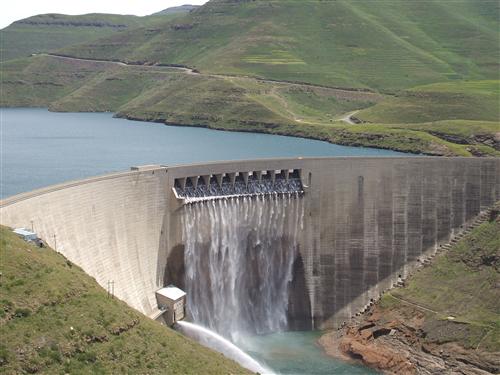Effective decision-making involves the management of risk. In water resource management, the selection of risk management actions requires a challenging integration of inputs from various specialist areas, often collecting and collating data using different methods. Ecological, socio-economic and physical data, such as water quality and river flow, all need to be considered in a balanced and representative way. Decision support frameworks and tools help in the integration of data and allow users to test different scenarios. In this way, a range of scenarios is generated, from the best probable outcome through the worst. Such decision support frameworks and tools, e.g. the aquifer vulnerability assessment tool (AVAP - see box below) (Saayman et al. 2007), should not fully replace experience and managerial judgment; if the results do not seem logical then decisions must be based on best judgment. Therefore, frameworks and tools should be used instead to assist and support decision-making.
Box: Aquifer Vulnerability Assessment Protocol
AVAP was designed in accordance with the following main stages of an aquifer vulnerability decision support framework:
-
Stage 1: Screening and Scoping – to determine whether an assessment of groundwater contamination risk is required for decision-making.
-
Stage 2: Assessment – to determine the risk of groundwater contamination, which depends on the characteristics of the contaminant and the vulnerability of the aquifer to pollution.
-
Stage 3: Decision-making – which integrates the outputs of the risk assessment into a cost benefit analysis, which the decision maker evaluates with consideration of relevant laws, regulations and guidelines and the principles and values of society.
Source: Saayman et al, 2007
Many different types of decision-making problems (e.g. appropriate timing of dam water release, and balancing fertiliser application with water resource degradation) have been tackled through the use of decision support frameworks. A decision support framework is particularly useful because input variables can be changed, to test different scenarios and illustrate possible outcomes. A scientifically sound framework also offers decision makers a means to support and justify decisions. This facilitates effective decision-making, as decision makers know that their decisions will be accepted and can pass scrutiny.
Scientific data and information have always been important for making decisions related to water resource management. Increasing demands for water have elevated the importance of reliable input data. The confidence with which the outputs of scientific assessments can be used in decision-making is directly related to the availability and quality of the data used (Morgan 2009). These factors have a significant influence on the uncertainty of decision-making. Sound scientific data is an important input to managing the risk of degradation, equitable distribution and sustainable use of water resources. This scientific data allows development planners and regulators to incorporate an adequate consideration of water resources in their planning process. Land-use planning that recognises impacts on water resources could contribute significantly toward sustainability.

Data about water availability can influence water management scenarios, which in turn impact releases from dams such as Katse Dam.
Source:Lesotho Highlands Development Agency 2009
( click to enlarge )
Policy and Legislation
Water resource decision-making can ultimately affect land use practices and resource allocation, and can identify a need for additional data collection. Decision-making, however, has to be guided by policy and legislation, e.g. the National Water Act (1998) of South Africa, the Water Resource Act of Lesotho (1978) and Water Act (2008), the Botswana Water Act (1968) and the Water Act 54 (1956) of Namibia. One such decision-making framework is the Environmental Management Framework, developed by Department of Water Affairs (DWA) in South Africa. This framework integrates Environmental Impact Assessments (EIAs), and in particular groundwater risk assessments, into the departmental decision-making process.
SADC protocol on Shared Watercourses Systems
Under Article 1 of the Protocol on Shared Watercourse Systems (1995), the SADC member states agreed to the “Commitment to the exchange of available information and data regarding hydrological, hydrogeological, water quality, meteorological and ecological condition of shared systems” (Turton and Quinn 2000). SADC and ORASECOM are in place to enable Protocol commitment through the creation of consistent methodologies for collecting and sharing data. Decision makers require appropriate understanding of the external decision-making environment in which they operate and the consequences of their decisions.
Among the challenges is that decision support tools require both scientific credibility and public understanding and acceptance. These requirements may conflict: public acceptance requires a framework that is simple and understandable, while scientific defensibility often requires a detailed and complex study.
The decision-making process starts with the analysis of costs and benefits of a proposed development and ultimately the formulation of management decisions and recommendations. The involvement of multiple types of stakeholders is essential throughout the process and communication and feedback between the water resource decision makers, scientists and other stakeholders needs to be continuous.
